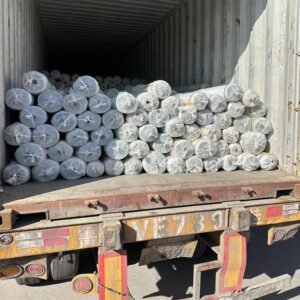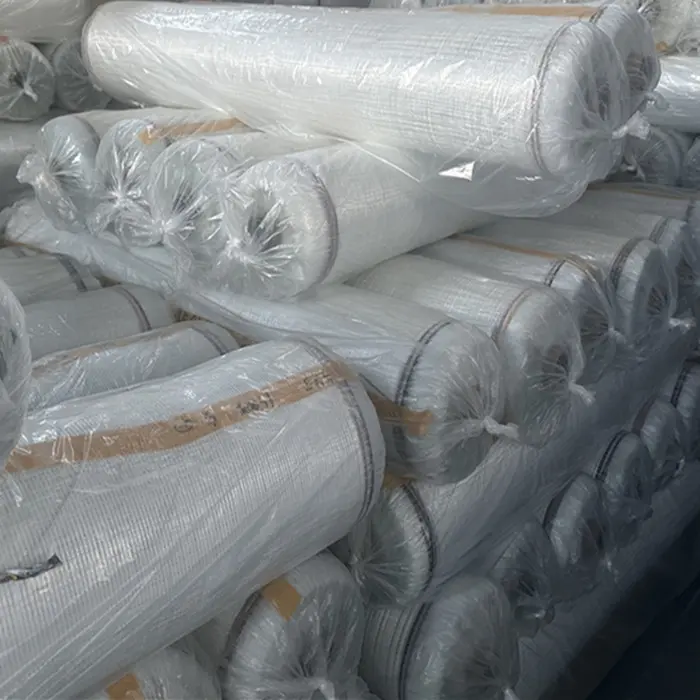Manufacturers produce spunbond polyester mat by spinning and bonding continuous polyester filaments with heat and pressure, creating a durable nonwoven fabric. The construction and waterproofing industry widely uses this material because it offers excellent mechanical and chemical properties, including high strength and durability.
Key Characteristics:
-
High Tensile Strength: Due to its continuous filament structure, nonwoven fabric like Spunbond polyester provides superior tensile strength compared to short-fiber alternatives.
-
Dimensional Stability: It maintains its shape even under extreme conditions, which makes it ideal for waterproofing applications.
-
High Temperature Resistance: Spunbond polyester mat can withstand temperatures up to 120°C or higher, making it a reliable choice for applications in hot climates or environments.
-
Chemical Resistance: This material is resistant to acids, alkalis, and organic solvents, which is crucial for its use in harsh environments.
-
Flexibility and Elongation: Spunbond nonwoven fabrics are flexible and can stretch to accommodate structural movements, which is important in waterproofing systems that need to adapt to shifting surfaces.
Applications in Waterproofing
Spunbond polyester mats are primarily used in waterproofing membranes and systems, especially in modified bitumen membranes (such as SBS and APP systems), and liquid-applied waterproofing systems.
1. Reinforcement in Bituminous Waterproofing Membranes
In modified bitumen membranes, Spunbond polyester mats serve as the reinforcement layer, enhancing the material’s overall strength, tear resistance, and dimensional stability under extreme temperatures. The nonwoven fabric acts as a critical structural element that supports the waterproofing layer, ensuring long-term durability.
2. Reinforcement in Liquid-Applied Membranes
Spunbond polyester mats are embedded in liquid-applied waterproofing systems (e.g., polyurethane or acrylic coatings) to enhance crack resistance and improve the flexibility of the overall system. The nonwoven fabric provides reinforcement that helps prevent cracks from forming, ensuring the longevity and integrity of the waterproofing layer.
3. Roofing and Infrastructure Applications
In roofing systems, Spunbond polyester mats act as support layers, improving puncture resistance, while also helping to maintain the performance of the waterproofing membrane. Additionally, they are commonly used in bridge decks, tunnels, and underground structures, where the material helps withstand the physical stress from structural movement and temperature variations.
Comparison with Other Reinforcement Materials
| Material | Tensile Strength | Heat Resistance | Flexibility | Cost | Usage |
|---|---|---|---|---|---|
| Spunbond Polyester Mat | High | High | Good | Medium | Widely used |
| Fiberglass Mat | Medium | Very High | Low | Low | Budget membranes |
| Needle-punched Polyester | Very High | High | Excellent | Higher | Premium-grade membranes |


Typical Use Cases
-
SBS/APP Modified Bitumen Membranes
-
Spunbond polyester mats enhance the performance of bitumen membranes, providing structural reinforcement.
-
-
Liquid-Applied Waterproofing Systems
-
Embedded in liquid coatings to enhance flexibility, crack resistance, and durability.
-
-
Bridge Decks and Tunnels
-
Used in high-stress areas to provide added durability and resistance to environmental factors.
-
-
Roofing Systems
-
Serves as an essential layer for added puncture resistance and long-term waterproofing performance.
-
Conclusion
The Spunbond Polyester Mat is an essential nonwoven fabric used across a variety of waterproofing systems. Its combination of tensile strength, flexibility, and resistance to environmental factors makes it ideal for high-performance applications in both residential and industrial projects.
Contact Us
Weifang Guanlong Waterproof Material Co., Ltd.Your reliable partner for high-quality materials and professional support.
📞 Phone/WhatsApp: +86 18263668883
🌐 Website: glwaterproof.com/product/
📧 Email: guanlinguoji@126.com







